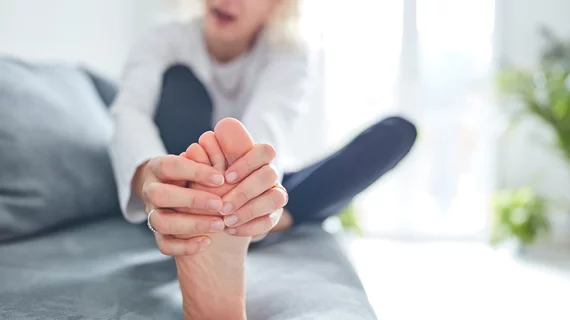Radiologists could help cut surgery costs by adopting an imaging-first treatment approach for a common foot ailment, experts in the specialty charged Wednesday.
Morton’s neuroma is a painful thickening of the tissue around nerves leading to the toes, which some estimates say may be the most prevalent mechanical neuropathy after carpal tunnel syndrome. Treatment approaches vary from ultrasound-guided steroid injection to surgical severing or removal of the nerve. Radiologists play a key role in both diagnosis via US or MRI and delivery of the former, researchers detailed in the American Journal of Roentgenology.
To determine the most cost-effective treatment pathway for these patients, University of Wisconsin scientists employed a computer simulation running through several scenarios. They found a strategy that selectively delivered imaging-guided injections—rather than going straight to surgery—won out, proving least pricey while most clinically impactful.
“Although a number of effective treatments for Morton neuroma exists, beginning with lower cost, less invasive treatments such as ultrasound-guided injection of steroid or alcohol while reserving surgery for non-responders is an affordable and effective strategy and should be supported as part of a cost-effective healthcare system,” Andrew Ross, MD, with the UW School of Medicine and Public Health’s Department of Radiology, and colleagues wrote Sept. 15.
Their simulation model involved five separate pathways and a three-year follow-up period. Possible responses ranged from no treatment to direct surgery, or selectively administering image-guided injections of steroids, alcohol, or trialing both. Ross et al. pinpointed the combo method as ideal, with a cost-effectiveness ratio of $4,401 per quality-adjusted life year. In simulation, this strategy was supported in 74% of 10,000 hypothetical trials, the authors noted. However, when the likelihood of successful alcohol ablation fell below 40%, the steroid-based method won out.
Experts cautioned that other factors may come into play, such as if patients are able to adhere to repeated visits for these injections versus a one-time surgery.
“The results of our analysis may guide decision making, but modeling cannot replace the judgement of an experienced physician,” the team added.

